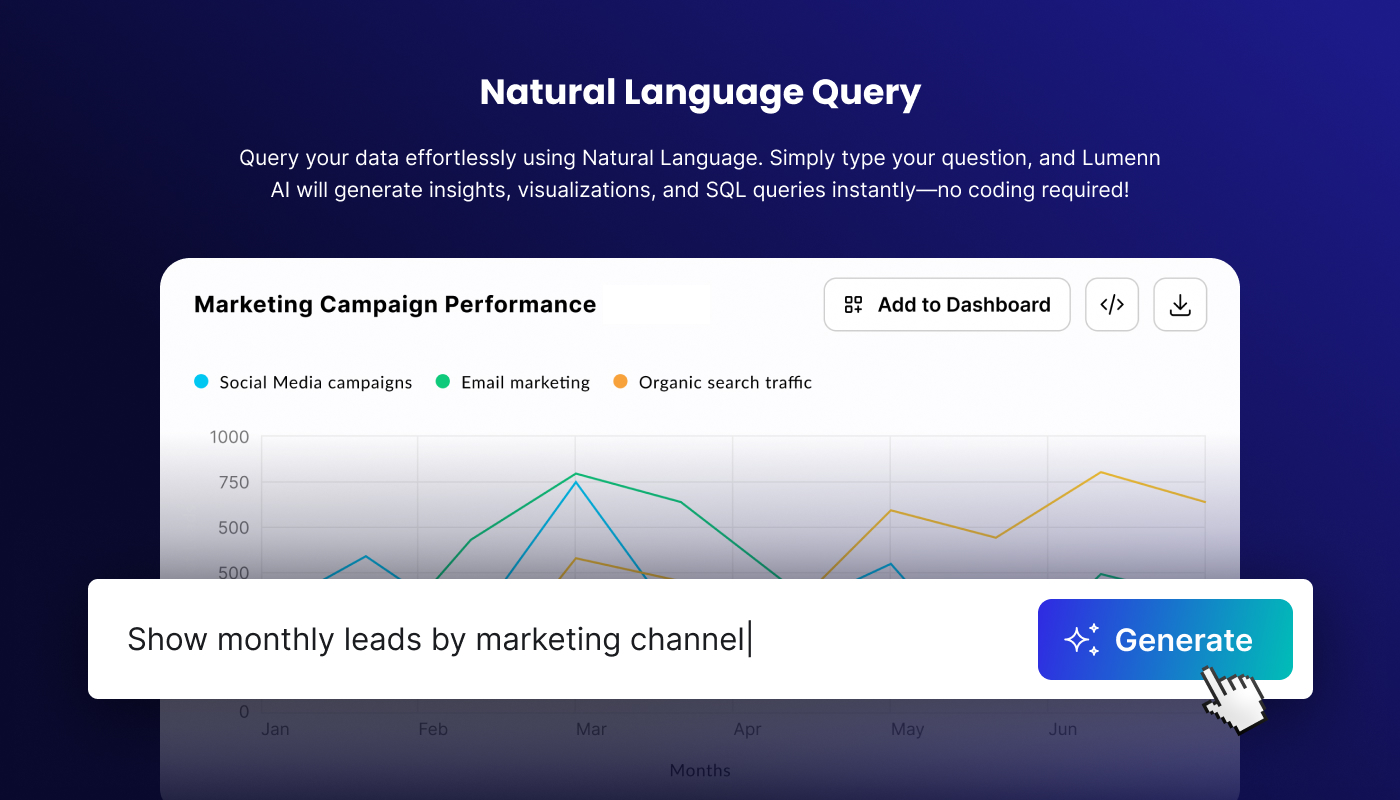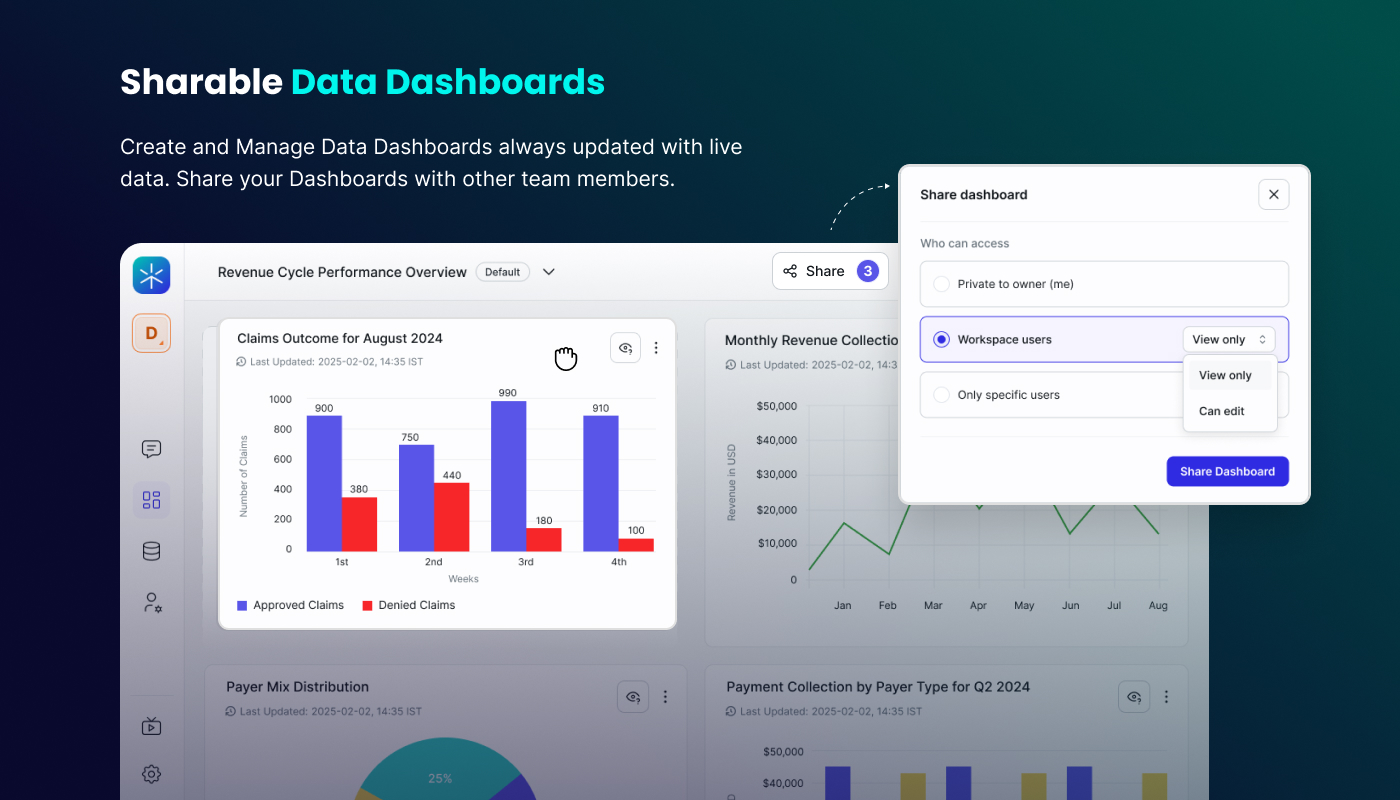In today’s fast-paced healthcare environment, data is the lifeblood of informed decision-making. With advancements in data analytics and AI-driven tools like Lumenn AI, healthcare leaders can transform their organizations by harnessing data effectively. Let us understand the importance of real-time healthcare data analysis by breaking the data silos.
The Importance of Healthcare Data Analysis
Healthcare data analysis has revolutionized the industry by enabling early disease detection, personalized medicine, operational optimization, and faster drug development. By leveraging data, healthcare leaders can ensure better patient outcomes, reduce costs, and improve efficiency. The ability to analyze vast amounts of structured and unstructured data empowers leaders to make evidence-based decisions that directly impact patient care and organizational success.
The Role of Data Connectivity
Data silos have long been a challenge in healthcare. Connecting multiple sources—electronic health records (EHRs), wearable devices, cloud services, and more—is essential for creating a holistic view of patient health and organizational performance. Tools like Lumenn AI simplify this process by using universal connectors that integrate disparate systems without copying or migrating data, ensuring both versatility and security. This seamless connectivity allows healthcare leaders to access comprehensive insights across departments.
Real-Time Analytics: A Game-Changer
Real-time analytics provide healthcare organizations with immediate insights into patient care, operational efficiency, and financial performance. By accessing up-to-date information at the point of care, clinicians can make better-informed decisions that enhance treatment outcomes and reduce unnecessary costs. Lumenn AI’s ability to connect to real-time data streams ensures that healthcare leaders can respond dynamically to changing conditions.
10 Ways Healthcare Leaders Should Be Using Data
Following are ten impactful ways healthcare leaders should use data:
1. Understand Which Treatments Are Most Effective
Data analytics allows healthcare organizations to compare treatment outcomes across demographics and conditions. By identifying which treatments yield the best results, leaders can standardize protocols that maximize patient recovery rates.
2. Track Patient Outcomes
Monitoring patient outcomes over time helps identify trends and areas for improvement. Real-time analytics enable clinicians to assess the effectiveness of interventions immediately.
3. Understand Costs
Analyzing financial data helps healthcare leaders identify cost drivers and optimize resource allocation. Lumenn AI’s dashboards simplify cost analysis by presenting actionable insights in an easy-to-understand format.
4. Improve Communication
Data-driven insights foster better communication between departments, clinicians, and patients. Lumenn AI’s collaborative dashboards allow teams to share analytics results seamlessly, improving coordination across the organization.
5. Empower Patients
Providing patients with access to their health data empowers them to take an active role in managing their health. Data visualization tools like Lumenn AI make complex information accessible even to non-technical users.
6. Identify Areas for Improvement
By collecting and analyzing operational data, healthcare leaders can pinpoint inefficiencies in workflows or patient care processes. Lumenn AI’s natural language processing (NLP) capabilities enable staff to query data easily without technical expertise.
7. Address Gaps in Care
Data can reveal where patients are falling through the cracks—missed follow-ups or untreated conditions—and help organizations implement targeted interventions.
8. Benchmark Performance
Comparing organizational performance against industry standards provides valuable insights into areas needing improvement. Lumenn AI supports benchmarking by integrating multiple data sources for a comprehensive view.
9. Identify Opportunities for Process Improvement
Operational analytics highlight bottlenecks in processes such as admissions or discharge procedures. Lumenn AI’s customizable dashboards allow leaders to visualize these inefficiencies clearly.
10. Enhance Efficiency and Effectiveness
By leveraging real-time insights from connected systems, healthcare organizations can streamline operations and improve overall effectiveness. Lumenn AI’s ability to integrate real-time data ensures decisions are based on the most current information available.
Why Healthcare Leaders Should Choose Lumenn AI
Lumenn AI stands out as a transformative tool for healthcare organizations due to its unique features:
AI-Driven Data Visualization and Report Generation
Lumenn AI leverages generative AI to create intuitive visualizations and reports in natural language that simplify complex datasets. Instead of scanning through different formats of databases business leaders can get a comprehensive view of different datasets. For example, they can directly ask questions like “What percentage of claims are in each status (Approved, Denied, Pending, Appealed)?”

No-Code Functionality
No-code functionality stops dependency on data engineers and BI teams for performing data analysis or creating BI dashboards. Non-technical leaders can perform advanced queries using natural language prompts, making better trade-specific questions and extracting the exact insights they need without delay.

Universal Connectors
Universal connectors opens up possibilities to connect to a wide range of data across various databases, data lakes, and data streams. This enables in-place querying and eliminates the need of data transformation, migration, or copying. As a result data stays in the original environment ensuring security and compliance. There is no need to hop around multiple tools to perform BI analysis encouraging versatility.
Real-Time Integration
Insights might become stale if they are not fresh especially in a sector like healthcare which involves real-time decision making. The ability of Lumenn AI for in-space querying allows real-time analysis of trends and patterns directly from patient EHRs and wearable devices accelerating decision making for patient treatment.
Collaborative Dashboards
Healthcare departments have their preferred applications and data storage leading to diverse types of data formats. Lumenn AI connects to all these different types of data sources and stores analytics results over dashboards that can be shared across teams. This helps in breaking data silos and improving departmental collaboration offering the holistic picture of certain workflows and metrics built with the latest data across the organization.

Lumenn AI empowers healthcare leaders to harness the full potential of their data without requiring technical expertise or extensive resources.
Conclusion
Healthcare leaders today face unprecedented challenges but also unparalleled opportunities through effective use of data analytics. By adopting tools like Lumenn AI, they can overcome barriers such as disconnected systems and outdated processes while unlocking actionable insights that drive better outcomes for patients and organizations alike.
The time is now for healthcare leaders to embrace advanced business intelligence solutions like Lumenn AI—because in an industry where every second counts, leveraging real-time analytics could mean the difference between success and failure.

